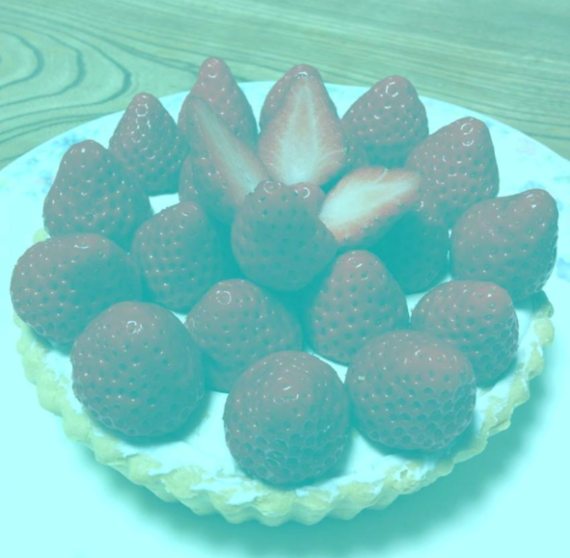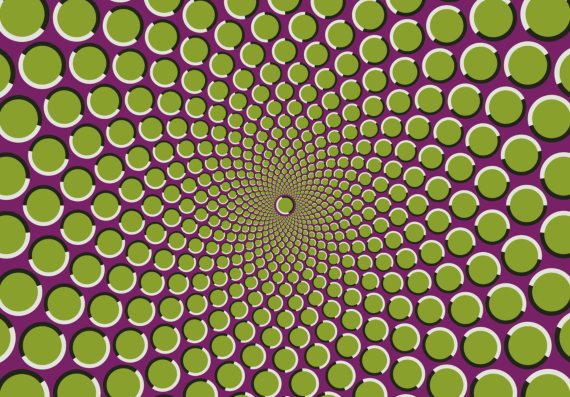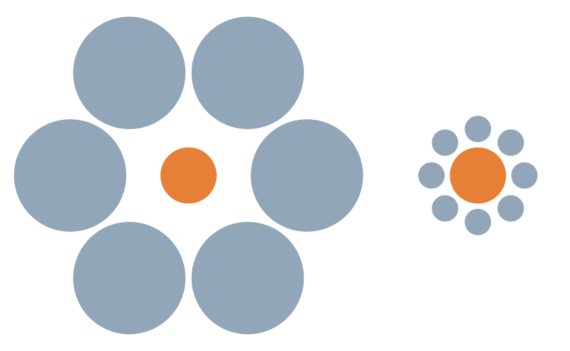15,000 years ago, in a corner of present-day France, a human from the Palaeolithic period carved a stone figure of a mammoth, or a bison; the truth is that the piece represents either animal depending on how it is interpreted. Its discoverer, Duncan Caldwell, has suggested that this is the oldest known case of an optical illusion because of its similarity to the rabbit-duck illusion, a drawing published in 1892 that is often cited as one of the pioneering examples of the modern study of these visual illusions. But today, beyond their curious nature, optical illusions are valuable tools that help to unravel the mysteries of perception and cognition.
Optical illusions range from the simplest and most classic ones, such as those by Müller-Lyer, Ponzo, Ebbinghaus or Delboeuf, which make us see lines or figures that are actually the same size appear different to each other, to the amazing geometries of Japanese mathematician and artist Kokichi Sugihara, which show us radically different shapes when the objects are viewed directly compared to their reflection in a mirror. Psychologist Richard Gregory classified optical illusions into physical, physiological and cognitive, subdivided in turn into fictions, ambiguities, paradoxes and distortions. These different effects involve distinct mechanisms and various levels of neural processing.
Some of the most surprising illusions are based on the same effect, simultaneous contrast; we find it hard to believe that two squares are the same shade of grey when we see them against contrasting backgrounds, as in Adelson’s checker-shadow illusion. This effect was first identified in the 19th century and has kept scientists busy ever since trying to work out whether the key to the effect lies in our vision or in our interpretation of reality, that is, whether it is physiological or psychological.
The effect of simultaneous contrast
A study by the Massachusetts Institute of Technology claims to have found the answer. The researchers prepared a modified version of a simultaneous brightness contrast, in which one background perceived as lighter was in fact darker than another. If we were to rely on our judgement of the brightness of both, we would see the contrasting figure as darker than the second, and instead the opposite is true. According to the director of the study, computational neuroscientist Pawan Sinha, “this result runs counter to the idea that high-level analysis of lighting conditions contributes to brightness estimation.”
The scientists have also proven that the illusion of simultaneous contrast does not depend on the integration of binocular vision and that it also occurs in children with congenital blindness who have just recovered their sight through surgery, so it is not based on visual learning. Overall, Sinha points out that this kind of optical illusion “is a low-level phenomenon,” possibly located in the retina itself, and that it does not depend on complex cognitive processing, contrary to what was proposed in the 19th century by physicist Hermann von Helmholtz. “This is something that the visual system comes prepared to do, right from birth,” he concludes.

As vision scientist Michael Bach, professor emeritus at the University of Freiburg and author of an extensive web catalogue of optical illusions, tells OpenMind, the effect of simultaneous contrast is explained by an inhibition of receptors in the retina that helps us to exaggerate differences in luminosity to better perceive our environment. Contrast is also partly responsible for an amazing illusion created by Japanese professor of psychology Akiyoshi Kitaoka in 2015, in which the strawberries on a cake look red on a blue background, even though they are grey. “The strawberries I would also place largely on the retina. I would assume it’s a white balance effect, invoking the entire retina, not just local,” says Bach.
Bees and flies also perceive them
Another clue that some of these illusions do not require a complex human brain arises from the fact that other species also perceive them; sensitivity to certain optical illusions has been shown in monkeys and other mammals, as well as in fish, reptiles and birds. But more surprising is to learn that it also occurs in insects, with eyes and brains so different from ours. In 2017 a study conducted by vision scientist Adrian Dyer from RMIT University in Australia showed that bees are susceptible to the Ebbinghaus illusion, whereby two equal figures are seen as being of different size depending on the surrounding objects.
More recently, a Yale University study led by neurophysicist Damon Clark revealed that fruit flies also perceive illusions of movement, in which a static geometric pattern appears to move. The researchers locate this effect in two specific neurons in the fly, and their experiments suggest that the insect’s brain and ours “may employ similar mechanisms.” As Dyer tells OpenMind, finding such parallels in species so far apart in evolution suggests that both have developed similar mechanisms: “I think convergent evolution is a likely explanation to why flies and humans are observed to experience illusory motion perception in a similar way.” For Clark too, “it’s probably a good bet that this is convergent evolution,” he tells OpenMind. However, Dyer does not rule out that humans and flies have inherited a certain baggage from a common ancestor: “There may be fundamental or basal processing mechanisms in the brain that enable such similar processing.”

However, if, as Clark suggests, “when we see illusions, it is because our brains are making the wrong inferences about visual patterns,” why would such disparate species have developed similar mechanisms that cause them to make such mistakes? For the neurophysicist, the likely solution lies in the fact that optical illusions are side effects of useful processes; the visual systems of humans and flies have evolved to compute light and dark contours differently in order to improve the appreciation of movement. “Basically, flies and humans inhabit similar visual environments, and our results suggest that their eyes may have evolved to deal with light and dark in the environment in similar ways when detecting motion.”
Thus, “these inferences are actually beneficial inferences to make — most of the time, during natural vision,” Clark says. In the case of illusions, they are unusual patterns that lead to error. “This theory would suggest that visual illusions exist because brains are taking advantage of statistical regularities in the world, and in that sense, these common illusions may all be instances of the same phenomenon: brains making inferences based on the typical arrangement of the visual world.”
Children are less susceptible
Nevertheless, much remains to be learned about our illusionary sense of perception. From the University of Milano-Bicocca in Italy, psychologist Elena Nava tells OpenMind about a study which found that the Ebbinghaus illusion is less deceptive for children, “because they are more accurate at discriminating size when the context is misleading,” she says. Nava and computer scientist Ana Tajadura-Jiménez, from the University Carlos III of Madrid, study body illusions, which are more complex than the merely visual ones; for example, the auditory Pinocchio illusion is a curious effect that makes us believe that a finger gets longer when we pull on it while listening to a sound rising in pitch. Here again, the two scientists have discovered that children are less susceptible.

As Tajadura-Jiménez tells OpenMind, these body illusions “involve both bottom-up multisensory integration mechanisms and other top-down processes, for example the presumption of body shape.” These complex processes develop with age: “Illusions require the ability to integrate different cues (be they sensory or solely visual) and children are not very good at it,” suggests Nava. Interestingly, adds Tajadura-Jiménez, body illusions have been observed in monkeys. For the scientist, this fickleness in the perception of our body can also be an evolutionary advantage: “It can be useful to adapt to new body configurations, for example if a drastic change occurs to our body, but also when we hold a tool and use it to operate in the environment, and to guide efficiently our interactions.”
Comments on this publication